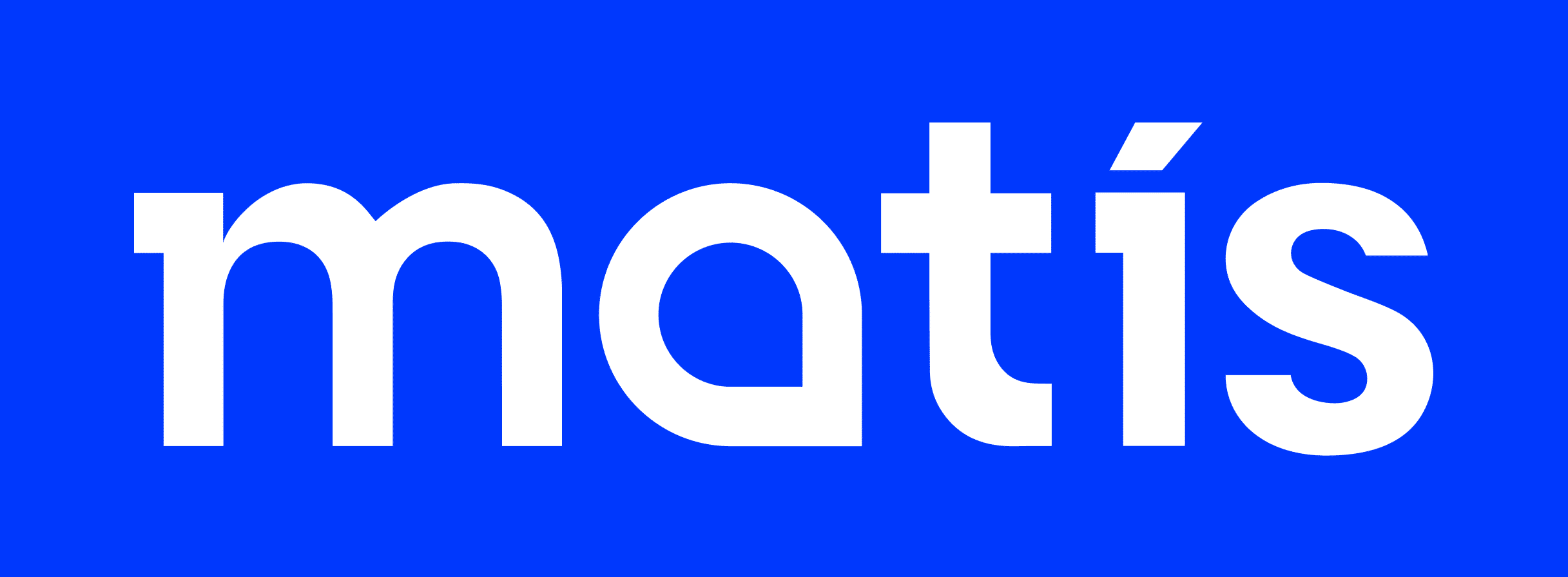Salmon farming has a low feed conversion ratio and provides high-quality protein with relatively low environmental input. In Iceland, production is currently 45,000 t annually and is projected to reach 245,000 t by 2033, over 30 % of which is expected from land-based systems. This study assessed the potential environmental impacts of land-based Atlantic salmon farming using Life Cycle Assessment (LCA), with a functional unit of 1 t of salmon produced in land-based farms in Iceland in 2021. A hypothetical scenario investigated the avoided environmental burdens of utilizing the salmon manure as fertilizer based solely on its nitrogen, phosphorus, and potassium content, instead of producing synthetic fertilizer. In addition, a sensitivity analysis tested four electricity mix scenarios: the default Ecoinvent Icelandic electricity mix (Scenario 0), an LCA-based Icelandic energy mix (Scenario 1), the residual mix accounting for Guarantees of Origin (GOs) certificates (Scenario 2), and the Ecoinvent European mix (Scenario 3). For Scenario 0, impacts per functional unit were: 1.4 t CO2 eq (Global Warming Potential), 8 kg SO2 eq (Terrestrial Acidification), 0.6 kg P eq (Freshwater Eutrophication), 582 m2a crop eq (Land Use), and 8659 m3 world eq (Water Scarcity Footprint). These results reflect relatively low environmental burdens compared to similar studies in other countries, largely due to Iceland’s renewable energy. However, results from scenario 3 in the sensitivity analysis led to a GWP increase by 377 %, due to its large fossil-based composition. These results stress the importance of energy sourcing in shaping environmental outcomes and can guide impact reduction strategies for future land-based salmon farming in Iceland.
Merki: Life cycle assessment
Markmið verkefnisins Kolefnisspor íslenskra matvæla (KÍM) var að þróa samræmda og vísindalega aðferðafræði til að meta kolefnisspor íslenskra matvæla og framkvæma útreikninga á kolefnisspori fyrir valin matvæli: mjólk, nautakjöt, lambakjöt og grænmeti (kartöflur og gúrkur). Reikningar byggðust að meginhluta á lífsferilsgreiningu (LCA) samkvæmt alþjóðlegum stöðlum, en einnig var tekið mið af öðrum viðurkenndum aðferðum og regluverkum, svo sem PEF (e. Product Environmental Footprint) leiðbeiningar Evrópusambandsins og vöruflokkareglur (e. Product Category Rules, PCR), þar sem við átti. Gagnaöflun fór fram í samstarfi við innlenda framleiðendur og hagsmunaaðila. Þar sem frumgögn voru ekki aðgengileg var stuðst við alþjóðlega viðurkennda gagnagrunna til að tryggja samræmi og áreiðanleika. Verkefnið lagði jafnframt grunn að birtingu kolefnisspors í ÍSGEM gagnagrunninum og dregur fram mikilvægi samræmdrar gagnaöflunar og aðferðarfræði við stefnumótun og sjálfbærni í íslenskum matvælageira.
_____
The aim of the project Carbon Footprint of Icelandic Food Products (KÍM) was to develop a harmonized and scientifically sound methodology for assessing the carbon footprint of Icelandic food products and to carry out footprint calculations for selected products: milk, beef, lamb, and vegetables (potatoes and cucumbers). The assessments were primarily based on life cycle assessment (LCA) according to international standards, but additional guidance from frameworks such as the Product Environmental Footprint (PEF), and Product Category Rules (PCR) was also applied where relevant. Primary data was collected in collaboration with domestic producers and stakeholders. Where such data was unavailable, internationally recognized databases were used to ensure consistency and reliability. The project also laid the foundation for publishing carbon footprint data within the ÍSGEM food composition database and highlighted the importance of coordinated data collection and methodology in supporting sustainability and policy in the Icelandic food sector.
Skoða skýrslu
This report presents the background, implementation, results and discussions connected to a peer-reviewed scientific journal article published in the Journal of Cleaner Production in November 2024. Scientific journals have strict requirements regarding the length of articles, and therefore it was not possible to present all the details that the authors would have liked in the paper. This report therefore provides additional information that was not included in.
_____
There has been a major renewal of the Icelandic trawler fleet since the turn of the century, while the number of such vessels has decreased by almost half. It has been claimed that the new vessels are much more fuel-efficient and that the carbon footprint of the products must therefore have decreased as results. Data on oil imports to fishing vessels seem to support these claims.
To better analyse the impacts of the fleet renewal on the carbon footprint of fish catches, several representatives from the Icelandic bottom trawler sector joined forces with experts from Matís, the University of Iceland and the University of Akureyri that work on assessing the environmental impacts in production systems. Data was collected from 11 trawlers over a 10-year period and a Life Cycle Assessment (LCA) methodology was applied to analyse their carbon footprint per unit of catch, and then a comparison was made between older and newer vessels to examine if there is a statistically significant difference. The vessels in the sample were chosen to provide a good cross-section of the Icelandic bottom-trawl fleet in terms of size, age, catch composition and location around the country. The sample included four new vessels that were purchased to replace older vessels, i.e. a comparison was made between old and newer vessels from the same fishing company, with the same catch quotas and even the same crew.
The results of the analysis revealed that the renewal of the trawl fleet alone has not had a significant impact on the carbon footprint per unit of catch. Three of the four new vessels examined did not show lower carbon footprint than the older vessels they replaced. The fourth vessel, however, showed a significant reduction in the carbon footprint, but that may be because it replaced two older vessels. The most likely explanation is therefore that since the catch quotas of two vessels were combined on one new vessel, it is the quota status and fishing pattern that had the dominant effect, rather than the age of the vessels. These results consistent with previous studies in Iceland, which have shown that the state of fish stocks, catch quotas, and fishing patterns are by far the most important factors when it comes to greenhouse gas emissions per unit of catch. Thus, the concentration of catch quotas and the reduction in the number of vessels have had a decisive effect on reducing the carbon footprint, rather than fleet renewal. However, it is worth bearing in mind that comparisons between years can be difficult as stock abundance and distribution, as well as catch patterns can vary greatly from year to year.
The results of the life cycle analysis also provided information on the average carbon footprint per unit of catch for the vessels in the sample. This is very important information, as such a comprehensive analysis of the carbon footprint of bottom-trawl catches has not been carried out in Iceland before. Previous data only covered individual trawlers over much shorter periods. The results show that the carbon footprint of a landed cod catch is 0.7 kg CO2 equivalent/kg catch, 0.8 kg when the carbon footprint is allocated to the edible part of the catch, and 4.5 kg when it is allocated to protein content of the edible parts. Similar results were shown for haddock and saithe, but the carbon footprint of redfish is much higher as the fishing itself is more energy-intensive and the utilisation for human consumption is much lower. These results are similar to comparable studies that have been conducted in recent years in the countries the Icelandic seafood industry prefers to compare with. When these values are compared to other protein sources, it is clear that Icelandic bottom-trawl catches are among the protein sources in the world with the lowest carbon footprint. For example, poultry has more than 12 times the carbon footprint per protein unit than the Icelandic cod, pork has 17 times the footprint, and beef has 80 times the footprint. It should be noted, however, that these are global averages.
It should be noted that the life cycle analysis only covered the fishing part of the value chain and that it did not take into account the effects that have been shown in previous studies to have a negligible effect on the carbon footprint of trawling. It also did not take into account the effects of trawling on the seabed, although in recent years it has been suggested that trawling releases large amounts of CO2 that is captured in bottom sediments. However, the scientific community has not agreed on what these effects actually are. The analysis was carried out in accordance with international standards, ISO 14044, and the results are therefore fully comparable with other studies where the same standards have been followed.
Skoða skýrslu
Abstract
Background
Health authorities are increasingly integrating environmental sustainability considerations into food-based dietary guidelines. However, concerns persist about the accuracy of the data used to assess environmental impacts, as well as the extent to which these guidelines are followed in practice.
Aim
To compare dietary greenhouse gas (GHG) emissions estimates using different top-down and bottom-up life cycle assessment (LCA) databases; and to estimate GHG emissions of food consumption within the ranges set for meat and dairy in recently proposed environmentally sustainable diets.
Methods
Dietary GHG emissions were estimated for participants in the 2019–2021 Icelandic National Dietary Survey (n = 822) using three publicly available LCA databases from Denmark, the US, and France. GHG emissions among participants whose consumption was aligned with the EAT-Lancet diet, the 2021 Danish food-based dietary guidelines and the 2023 Nordic Nutrition Recommendations were also quantified.
Results
The mean dietary GHG emissions among participants were 6.3, 6.1, and 6.1 kg CO2-eq/day based on the Danish (top-down), US (bottom-up), and French (bottom-up) databases, respectively. The relative ranking of foods was also consistent across all three databases. For example, the relative contribution of total CO2-eq (% range for the three databases) was highest for red meat (39–51%), followed by dairy (10–17%) and beverages (9–13%). The contribution from plant-based foods (6–10%), seafood (4–11%), and poultry/eggs (<5%) was modest. The dietary habits of most participants (86%) were outside the ranges for meat and dairy consumption as set by the three sustainable diets. However, participants reporting consumption within the ranges for meat and dairy had mean GHG emissions ranging between 4.2 and 4.7 kg CO2-eq/day, depending on the diet. In comparison, the mean for participants not adhering to the sustainable diets was 7.7 kg CO2-eq/day. These results are higher than those reported in other Nordic and European studies, likely due to high consumption of lamb, beef, and dairy, and low consumption of plant-based food.
Conclusion
All three LCA databases provided similar estimates for total dietary GHG emissions and relative ranking of different food groups. Based on current dietary habits in Iceland, adherence to environmentally sustainable diets would lead to a substantial reduction in dietary GHG emissions.
Life Cycle Assessment on fresh Icelandic cod loins / Vistferilsgreining á ferskum þorskhnökkum
With growing human population and increased fish consumption, the world’s fisheries are not only facing the challenge of harvesting fish stocksin a sustainable manner, but also to limit the environmental impacts along the entire value chain. The fishing industry, like all other industries, contributes to global warming and other environmental impacts with consequent marine ecosystem deterioration. Environmentally responsible producers, distributors, retailers and consumers recognize this and are actively engaged in mapping the environmental impacts of their products and constantly looking for ways to limit the effects. In this project a group of Icelandic researchers and suppliers of fresh Icelandic cod loins carried out Life Cycle Assessment (LCA) within selected value chains. The results were compared with similar research on competing products and potentials for improvements identified. The project included LCA of fresh cod loins sold in the UK and Switzerland from three bottom trawlers and four long‐ liners. The results show that fishing gear has considerable impact on carbon footprint values with numbers ranging from 0.3 to 1.1 kg CO2eq/kg product. The catching phase impacts is however dominated by the transport phase, where transport by air contributes to over 60% of the total CO2 emissions within the chain. Interestingly, transport by sea to the UK emits even less CO2 than the domestic transport. Minimizing the carbon footprint, and environmental impacts in general, associated with the provision of seafood can make a potentially important contribution to climate change control. Favouring low impact fishing gear and transportation can lead to reduction in CO2 emissions, but that is not always practical or even applicable due to the limited availability of sea freight alternatives, time constrains, quality issues and other factors. When comparing the results with other similar results for competing products it is evident that fresh Icelandic cod loins have moderate CO2 emissions.
Samfara mikilli fólksfjölgun og aukinni fiskneyslu stendur sjávarútvegur á heimsvísu nú frami fyrir því mikilvæga verkefni að nýta fiskstofna á sjálfbæran hátt á sama tíma og þau þurfa að lágmarka öll umhverfisáhrif sem hljótast af veiðum, vinnslu, flutningunum og öðrum hlekkjum í virðiskeðjunni. Sjávarútvegur, líkt og allur annar iðnaður, stuðlar að hlýnun jarðar og hefur jafnframt í för með sér ýmiss önnur umhverfisáhrif sem hafa skaðleg áhrif á lífríki sjávar. Fyrirtækisem vilja sýna félagslega‐ og umhverfislega ábyrgð ísínum rekstri gera sér fulla grein fyrir þessu og sækjast því eftir að fylgjast betur með umhverfisáhrifum sinnar framleiðslu og leita leiða til að draga úr þeim. Með þetta í huga tók hópur íslenskra rannsóknaraðila, sjávarútvegsfyrirtækja og sölu‐ og dreifingaraðila saman höndum, til að framkvæma vistferilsgreiningu (LCA) í völdum virðiskeðjum ferskra þorskhnakka. Niðurstöðurnar voru svo bornar saman við niðurstöður sambærilegra rannsókna sem gerðar hafa verið á samkeppnisvörum, jafnframt því sem leiðir til að draga úr umhverfisáhrifum innan áðurnefndra virðiskeðja voru kannaðar. Rannsóknin náði til ferskra íslenskra þorskhnakka sem seldir eru í Bretlandi og Sviss. Hnakkarnir voru unnir úr afla þriggja togara og fjögurra línubáta. Niðurstöðurnar sýna að tegund veiðarfæris hefur mikil áhrif á sótspor / kolefnisspor afurðanna þar sem línubátarnir komu heilt yfir töluvert betur út en togararnir. Sótspor einstakra skipa í rannsókninni var á bilinu 0.3 til 1.1 kg CO2eq/kg afurð, sem verður að teljast nokkuð lágt í samanburði við fyrri rannsóknir. Þegar kemur að því að skoða alla virðiskeðjuna er það hins vegar flutningshlutinn eða flutningsmátinn sem skiptir langsamlega mestu máli þ.s. sá hluti ber ábyrgð á yfir 60% sótsporsins þegar varan er flutt út með flugi. Sé hún hins vegar flutt út með skipi verður sótspor flutningshlutans sáralítið og fer þá innanlandsflutningur að skipta meira máli en flutningurinn yfir hafið. Lágmörkun umhverfisáhrifa sem hljótast af veiðum, vinnslu og dreifingu sjávarafurða getur haft mikilvægt innlegg í baráttunni gegn hlýnun jarðar. Með því að velja veiðiaðferðir og flutningsmáta með tilliti til sótspors er unnt að draga umtalsvert úr kolefnisútblæstri, en það þarf þó einnig að hafa í huga að það er ekki ávalt mögulegt eða raunhæft að velja eingöngu þá kosti sem hafa lægst sótspor. Niðurstöður þessara rannsóknar og samanburður við niðurstöður sambærilegra rannsókna sýnir að ferskir íslenskir þorskhnakkar sem komnir eru á markað í Bretlandi og Sviss hafa hóflegt sótspor og eru fyllilega samkeppnisfærir við aðrar fiskafurðir eða dýraprótein.
Skoða skýrslu
Comparison of transport modes and packaging methods for fresh fish products – storage life study and life cycle assessment
Mikill ávinningur er í bættri stjórn á virðiskeðju útflutnings á ferskum fiskhnökkum til dreifingar í verslanakeðjum í Bretlandi. Með bættum aðferðum við pökkun væri hægt að auka geymsluþol vöru, sem er grundvallaratriði í þessum viðskiptum. Með loftæmdum umbúðum væri hægt að flytja vöru í krapakeri með lágu hitastigi (niður í -1 °C) sem bæði myndi lækka flutningskostnað verulega og gæti jafnframt lengt geymsluþol vörunnar. Einnig gefur aðferðin möguleika á pökkun með neytendaupplýsingum sem gerir frekari pökkun erlendis óþarfa. Í flutningi með flugi væri hægt að pakka allri vöru í 12 kg frauðplastkassa í stað 3 kg, eins og algengast er í dag, og spara þannig verulegan flutningskostnað. Notast var við hitamælingar, skynmat, efna- og örverumælingar og lífsferilsgreiningu til að bera saman mismunandi pakkningalausnir fyrir sjó- og fluflutning. Ferskir ýsubitar í lofttæmdum umbúðum í keri með krapaís, sem geymt var við dæmigerðan hita í gámaflutningi, reyndist hafa 3–4 dögum lengra geymsluþol en hinir tilraunahóparnir, væntanlega aðallega vegna betri hitastýringar. Samræmi milli niðurstaðna skynmats og örverumælinga var almennt gott. Lægstu umhverfisáhrif allra hópa voru kerahópsins með sjófluttar, lofttæmdar umbúðir en þá útfærslu mætti enn frekar bæta með tilliti til blöndunar ískrapans og fiskhitastýringar og þar með geymsluþols.
The aim of the project was to compare alternative packaging methods of fresh fish loins to the traditional packaging. Comparison was made between packages in terms of temperature control and product storage life by simulating air and sea transport from Iceland to UK in air climate chambers. The evaluation was made by the sensory panel and microbialand chemical analysis by the Matís laboratory in Reykjavík. Furthermore, the environmental impact of the aforementioned transport modes and packaging methods was assessed by means of LCA (Life Cycle Assessment). About 70–75% of Iceland’s exports of fresh fillets and loins are transported by air and the rest by container ships. Increased knowledge on the advantages and disadvantages of the packages used for this fresh fish export will facilitate the selection of packages and improve the quality and storage life of the products. By using vacuum-packaging it is possible to use 12 kg packages in air freight instead of the traditional 3– 5 kg packages; but the market is increasingly demanding smaller individual packages. Sea transported larger packages use less space in shipping, lowering freight cost and environmental impact. Vacuum packed haddock loins immersed in slurry ice in a fish tub stored at sea transport temperature conditions proved to have a 3–4 day longer storage life than all the other experimental groups, probably mainly because of better temperature control. Good agreement was obtained between the sensory- and microbial evaluation. Finally, the sea transport-tub-group was found to be the most environmental friendly and could be improved with regard to product temperature control and thereby storage life.



